Is it hard? Yes. Is it getting harder? Also yes. But with these strategies, you can win anyway.
You know the old saying, “You can never have too many friends”?
That same sentiment applies to donors.
After all, the more people who support your cause, the more good you can do.
It’s actually very synonymous, because really, donors are just friends of your nonprofit.
So the question is, how do you make new friends for your organization?
As a child, we simply made friends by saying hi to the other kids on the playground.
You play in the sand box? So do I! BOOM! Instant best friends.
Finding donors isn’t quite so simple, but it’s not really all that different, either.
It’s like Will Rogers used to say, “A stranger is just a friend I haven’t met yet.”
Potential donors are literally everywhere.
You just have to find and meet them.
Easier said than done, right?
Well, maybe not.
People have a tendency to give to organizations with whom they have a connection.
Maybe it’s a personal experience they’ve had, or maybe it’s a cause they can relate to.
It could even be a personal connection with an individual who is already associated with your nonprofit.
Either way, connection is key for donor support.
By identifying and seeking out people who connect with your cause, you’re sure to build a loyal following and raise funds necessary to complete your mission.
FIND MORE DONORS IN 3 EASY STEPS
Every successful nonprofit has managed to build a donor base.
But even the most charitable people have their financial limitations.
Simply put, you can’t keep relying on the same people to support your organization.
Additionally, not everyone is willing to give to nonprofits.
They may have allocated their funds to other purposes.
Or they may already have exclusive loyalties to other organizations.
Finding the right people is key to building a strong donor base.
Here are 3 simple steps for building a new list of prospective donors and how to seek them out.
Step #1: Identify Your Audience
Before you start asking for donations from every stranger you meet, pause for a minute.
There’s actually some strategy involved to ensure you’re finding the right people for your cause.
The first thing you should do is identify your audience.
Hint: “Anyone with money!” is not the right answer.
To optimize your efforts and maximize your resources, take a strategized approach to be sure you’re finding the right people.
Use prospect research to better identify the people (or types of people) who are drawn to your organization.
Begin by writing down the persona of your ideal advocate.
It could be people who have already given to your organization, or a hypothetical audience.
If they’re previous donors, what contributions have they made to other nonprofits?
Note characteristics like interests, hobbies, and habits that paint a picture of the people you should be targeting.
Consider what their current situation may be.
Identify any potential challenges they may be facing and imagine a resolution to their situation.
Once you’ve made this list, compare your notes and circle all of the commonalities you see.
This helps you create an ideal donor profile, and it not only helps to pinpoint specific individuals to contact.
You identify an entire subset of people with similar traits, which expands your donor target exponentially.
Understanding your audience is key to knowing where to find them and how to approach them for support.
Step #2: Brainstorm Places Where Those People Will Be
Once you’ve identified who your prospects are, it’s time to seek them out.
Use the profile you’ve created to brainstorm places where you’ll find those kinds of people.
Consider church groups, hobby clubs, and associations where like-minded people gather.
Don’t limit possibilities to physical locations. Think about online groups as well.
Social networks are a great place to easily find common interest groups.
Between hashtags that identify subject matter and searchable group pages, social media makes it easy for people to connect and share information.
All of these places are your target for prospective donor support.
Create a list of organizations and groups to contact, along with email addresses and phone numbers.
Then, set aside a few minutes each day, because the real work is about to begin.
Step #3: Reach Out To Those Places
Go down your contact list and each day, send 3-5 emails (or make 3-5 phone calls) to the places you discovered.
Create a script that introduces your nonprofit to the group and asks for an opportunity to visit a meeting and share more information.
You already know the people in that group are a good fit for your organization.
By attending their meetings, you’re bringing information that benefits them and helps develop an ongoing relationship.
In this way, you increase the chances they’ll donate to your cause and become a loyal follower of your organization.
Once you’ve gained a foothold within these groups, bring your A game.
Give an engaging presentation that highlights how your organization helps your constituency.
Show how donor dollars make an impact.
Demonstrate why you need your audience’s support.
Find ways to build connections between them and your organization.
At the end of the meeting, you’re sure to receive donations.
Not just from individuals, but maybe even the group itself!
Even better, they may share their contact information and help spread the word about your nonprofit to their own contacts.
This broadens your reach and allows you to cast a wider net, all because you attended a single meeting.
USE EVENTS TO DRAW DONORS IN
In addition to actively seeking out new donors, you can also entice supporters to come to you.
Use the same principles for identifying a targeted audience and create opportunities for them to seek you out.
Here are some event ideas that will draw donors to your door.
Idea #1: Host a Meet and Greet
Once you know who your prospects are and where to reach them, you’re able to build contact lists with email addresses and phone numbers.
Use that information to invite quality leads to a meet and greet.
Lead a tour of your facility.
Engage people with a dynamic presentation to educate them about your organization and the people you serve.
Invite members of your constituency to share testimonials so attendees can see the impact their donations could have.
After the event, follow up with attendees for feedback and to get a read on level of interest for involvement.
Idea #2: Hold an Unconventional Fundraiser
Attract people to your events with outside-the-box campaigns that create buzz and draw attention.
Through creative fundraiser events, you can get first-time donors in the door and begin to build a relationship with them.
People are enticed by once-in-a-lifetime opportunities.
Create a chance for donors to spend the night in a transformed landmark.
Sell tickets for the opportunity to rappel down the side of a building.
When you include people in a memorable experience, you raise awareness about your organization, build a loyal following, and increase the likelihood of future donations.
Idea #3: Promote House Parties
Your staff and board members are terrific advocates for your nonprofit.
They all have friends who want them to succeed.
Encourage people to host parties at their homes where they invite their contacts to learn more about the nonprofit they support.
The emphasis of the party is an opportunity for friends to gather.
A small portion of the evening should be reserved for hosts to provide a brief presentation.
They ought to keep it casual, and give a personal testimonial about why your organization is important to them.
Hosts can accept donations on site and encourage attendees to share their contact information for future outreach.
Leave guests with swag bag party favors, and be sure to include a donation slip with a stamped envelope so they can donate at a future time.
Idea #4: Create a Virtual Event Online
Let’s face it.
Not everyone enjoys leaving their house to attend an off-site event.
For some, mingling with strangers builds anxiety and dread.
Consider hosting an online silent auction to attract interested parties and allow them to engage and support you from the comfort of their own home.
Auction off anything from wine tastings and cooking lessons to drivable destinations like a local bed and breakfast and golf resorts.
Offer flexible expiration dates so winners can take advantage of prizes at their convenience.
Online events are not only easy to attend.
They’re simple for people to share with their friends and family.
Let them spread the word about your organization by sharing a link to your virtual auction.
Broaden your reach, increase awareness, and gain a loyal following.
FOCUS ON THE RIGHT AUDIENCE TO BUILD YOUR DONOR BASE
To summarize, there are three main donor groups nonprofits seek:
- Individuals
- Businesses
- Foundations
Individuals have the most potential for revenue for your organization.
Businesses are conscientious about their social responsibility and have the funds for philanthropy projects (which could be you!).
Foundations award grants to help perpetuate the good deeds of nonprofits like yours.
Regardless of which donor category you want to reach, identifying the right target audience is the key to success.
Understanding your audience helps you develop customized, relevant content that resonates with people.
This is how you build the connections with people that are so important in securing donations.



